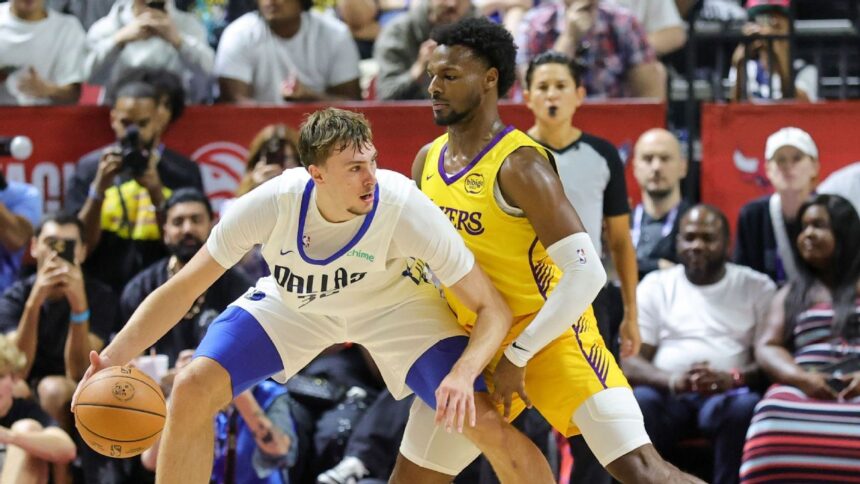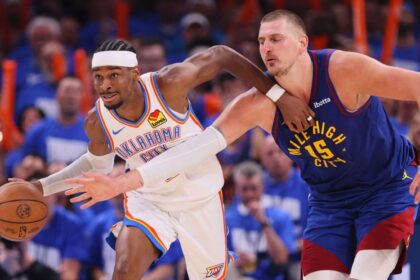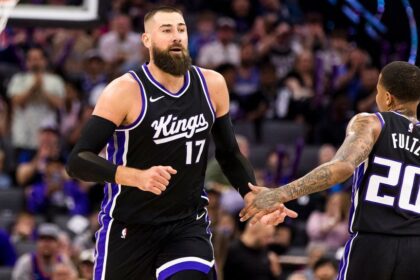Cooper Flagg Debuts with the Mavericks in the Summer League
Cooper Flagg, the expected prospect, made his debut with the Dallas Mavericks in the NBA 2K26 Summer League, facing the Los Angeles Lakers and Bronny James. The game, which had the highest average ticket price for a Summer League game since Victor Wembanyama’s debut, saw Flagg score an impressive dunk for his first professional points. The player, selected as number 1 in the 2025 draft, finished with 10 points, six rebounds, and four assists, while Dallas defeated Los Angeles 87-85. James finished with eight points, two rebounds, and two assists.
What can we deduce from the first game of the number 1 draft pick with the Mavericks? Alofoke Deportes experts analyze the general conclusions, their best moment, and which part of their game had the greatest impact.
Flagg, an instant force for the Mavs
There has never been any doubt about Flagg’s athleticism. At just 18 years old, the 6-foot-8, 220-pound player possesses a prototypical NBA build and the kind of explosiveness that makes the crowd marvel several times per game.
Combining these physical gifts with Flagg’s ability to handle the ball at full speed and his sense of the game, it’s easy to see why Mavericks coach Jason Kidd felt the vibe of a young Grant Hill when studying the video of the draft’s number 1 pick.
Flagg should be an instant force as a weapon in the transition offense. That facet of Flagg’s game was on display in his first official outing in a Dallas uniform, although he didn’t find his rhythm in the half-court offense against the Lakers.
The first basket by Flagg was a ferocious dunk to finish a one-man fast break that he initiated with a steal. He set the pace again on the next possession before scoring a smooth shot from the baseline over Dalton Knecht, the Lakers’ 2024 first-round draft pick. Flagg also made an impressive assist on the Mavs’ next possession, a long pass from beyond half-court as he pushed the ball up the court again. It won’t appear on the stat sheet because Dallas’ center, Moussa Cisse, couldn’t finish, but it’s not hard to imagine Dereck Lively II or Daniel Gafford converting that pass into a rim-rattling dunk.
The combination of athleticism and game sense of Flagg also created the most important sequence of the night. He rose to block a layup attempt, re-imposed the pace and found point guard Ryan Nembhard for an open three-pointer that gave the Mavs the definitive lead with 59.1 seconds remaining.
It was a bad shooting night for Flagg (5 of 21 from the field, 0 of 5 from three). But it was fun to watch him run the fast break, something he seems ready to do as soon as he enters the league.
Flagg’s Mate Ignites the Summer League Crowd
The crowd at the Thomas & Mack Center was so eager for Thursday’s game between the Mavericks and Lakers that they mercilessly booed the referees at the end of the game between the Brooklyn Nets and the Oklahoma City Thunder. It’s not that they disagreed with the validity of the technical foul called on Brooklyn rookie Ben Saraf in the final seconds, but rather that they were fed up with any whistle that stood in the way of Cooper Flagg finally stepping onto the court.
Once the game began, the fans’ gratification for seeing Flagg officially plant his presence in the league was delayed even further.
The first official Flagg statistic in the Summer League was a missed shot from 12 feet at 18 seconds of the first quarter. Less than 30 seconds later, he reappeared on the stat sheet, this time for committing a foul on Lakers forward Darius Bazley on the rebounds.
Almost 30 seconds later, Flagg took his second shot, this time a 3, and missed again.
He hadn’t scored yet when he was first substituted with 5:38 left in the first quarter. But after a short rest, he came back in. And it happened. Lakers guard DJ Steward made a pass that Flagg intercepted, snatching it and running to the other end to finish the fast break with a coast-to-coast dunk.
The crowd got what it wanted, erupting in a roar that echoed throughout the arena.
Flagg finished with 5 of 21 field goals, scoring 10 points, six rebounds, and four assists in the 87-85 victory.
An forgettable line, at best. But it made a moment happen. You never forget your first time.
Flagg’s production beyond the statistics sheet
Flagg only made 5 of 21 shots and didn’t score in the second half of his Summer League debut. But there’s no reason to worry about a bad shooting night: his promise is based on his ability to fill the stat sheet in many ways beyond scoring.
In Duke, Flagg averaged 7.5 rebounds, 4.2 assists, 1.4 steals, and 1.4 blocks per game. For context, the only NBA players who averaged similar numbers (7-4-1-1) in those categories last season were the versatile forwards Scottie Barnes and Jalen Johnson. The players in NBA history with the most seasons of this type are Kevin Garnett (10 times), Giannis Antetokounmpo (8), and Chris Webber (7).
Flagg essentially matched his college averages in 32 minutes on Thursday, with six rebounds, four assists (he would have had more if his teammates had made more 3-point attempts after Flagg’s passes), three steals, and one block. He also recorded only one turnover, despite facing strong pressure from the Lakers’ defenders.
That complete production is a big part of Flagg’s appeal and a reason for optimism entering his rookie season for an apparent contender. Playing alongside Anthony Davis, Klay Thompson, D’Angelo Russell and eventually Kyrie Irving, Flagg won’t need to lead his team in shots, as he did on Thursday. But he will be more effective if he can contribute in all other facets of the game, particularly on defense, where his game-changing potential already makes him seem like a game-changer.
Flagg’s size will challenge the NBA
The size of Flagg was the first thing that caught my attention against the opposition of the NBA. Listed as 6 feet 9 inches, Flagg is projected to start his career as a small forward for the giant Mavericks, who have a frontcourt of Anthony Davis of 6 feet 10 inches and Dereck Lively II of 7 feet 1 inch.
To open the game, Flagg was defended by former first-round draft pick Darius Bazley, nominally the starting center for the 6-8 Lakers. That type of defensive matchups won’t be an option when he plays alongside Davis and Lively or 6-10 Daniel Gafford, who can punish smaller defenders in a way that no one else on Dallas’s summer roster can.
Against shorter opponents, Flagg’s size should provide multiple benefits. When running pick-and-rolls, Flagg will have clear passing lanes over defenders. That’s something Kidd encouraged Giannis Antetokounmpo to utilize while coaching a young Antetokounmpo with the Milwaukee Bucks. Clearly, he’s following a similar game plan with Flagg.
On the defensive end, Flagg’s size allows him to make highlight plays as Kram quantified. A 7-foot wingspan, almost as big as that of center Derik Queen (7 and a half feet), means Flagg will constantly be present in passing lanes.
Ideally, the Mavericks will eventually find a wing stopper, allowing them to deploy Flagg against bad shooters as an active help defender. For now, Dallas might need Flagg to defend the opponent’s best perimeter threat when P.J. Washington Jr. is on the bench.









